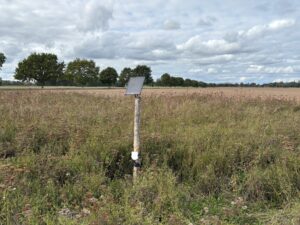A major new analysis of Britain’s beleaguered fresh water supply has found psychoactive substances are unknowingly being consumed by the public, despite efforts to purify liquids.
Conducted by a research team at Bournemouth University, samples of water in South Wales found high levels of benzoylecgonine, a compound the body produces when cocaine is absorbed.
One quarter of cocaine residue was also found to still be in the water supply after it had been treated to purify, with the highest concentration observed being 8.54 milligrams of the illegal drug per day, per 10,000 people, found the weekend after a major sporting event was held in Cardiff, significantly increasing local footfall. Two other sites recorded levels of 3.88 milligrams and 1.97 milligrams per day, per 10,000 people.
‘Testing for NPS [New Psychoactive Substances] can be expensive, especially because they evolve very quickly. So by knowing what is popular within certainly communities, we can tailor how we test for certain substances in different areas and do not spend time and resources testing for drugs that are not around,’ said Bethan Davies, PhD student at Bournemouth University, who led on the study. Understanding more about the most common drugs in communities could be very useful for those who have to work with people who misuse them, helping them develop public messaging about the risks and being able to provide the most effective treatment.’
The analysis has been published in the midst of major public concern about the state of Britain’s water network, and in particular the presence of dangerous pollutants in the supply. Last week, Steve Reed, Secretary of State for Environment, Food & Rural Affairs, outlined plans to reform the sector in a bid to end ‘pollution for profit’.
‘The pledge to engage engineers, scientists, managers, conservationists, campaigners, farmers, infrastructure operators and the public both directly and through public consultation aligns with our own recommendations in A Fresh Water Future,’ said Alastair Chisholm, Policy Director, Chartered Institution of Water and Environmental Management [CIWEM]. ‘It also means the opportunity for detailed consideration of what does and doesn’t work, with a commitment to further legislation if required. This offers real hope of a serious approach to tackling the wide-ranging and complex challenges that plague our water.’
A Welsh Water spokesman said: ‘This study, which we supported, looked at levels in wastewater, and should not be confused with drinking water supplies.
‘Wastewater is treated to remove a number of chemicals and toxins in line with our regulatory permit.
‘Our drinking water is provided from a completely separate system and is highly regulated so the water we provide is of the highest quality.’
More on waste and recycling:
British business must prepare for 2025’s Mandatory Food Waste Separation law
UK Government waste & recycling datasets fell by 50% under Conservatives
















